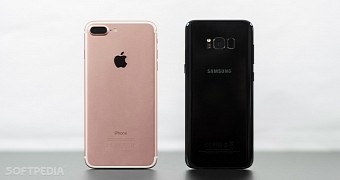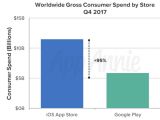With Windows 10 Mobile already in maintenance mode and expected to be completely retired next year when it officially reaches the end of support, Microsoft has been super-committed to making all of its apps available to users on Android and iOS.
Microsoft’s investments in Apple’s iOS and Google’s Android started way before the company confirmed the demise of its mobile platform, and needless to say, this caused a lot of frustration in its own user community. Diehard fans were frustrated that Microsoft was prioritizing new feature releases on rival platforms, especially because the uncertainty around its platform was still looming.
When the software giant finally confirmed in late 2017 that no new features and devices are planned for Windows 10 Mobile, it all started to make a lot more sense.
With Windows 10 Mobile going dark, investing in iOS and Android is Microsoft’s only way to remain relevant in the mobile business since it doesn’t have a platform of its own. But in addition to this, this strategy also touches three major points which prove that Microsoft is playing the right card.
All users are here
By investing in Android and iOS, Microsoft is targeting pretty much 99 percent of the mobile market, as these two platforms are currently the undisputed leaders in this side of the market. And there’s a huge chance nothing’s going to change anytime soon since neither Windows 10 Mobile nor BlackBerry OS managed to survive the fierce competition.
According to Kantar data analyzing smartphone sales for the three-month period ending in November 2017, Android was the number one operating system with 59.4% share in the United States, while iOS was the runner-up with 39.8%. The difference is substantially bigger in Europe, where Android leads the battle in the EU5 region with 75.1% versus 23.9% for iOS.
Since all users are here, it makes sense for Microsoft to invest so aggressively in these ecosystems, and don’t be too surprised if the company decides to go beyond the software and services push. No hardcore Windows phone fan can imagine Microsoft building an Android phone, but in the long term, this is an approach that could prove to be highly profitable for the company, especially in the enterprise.
For Microsoft, more users mean more money, and this is exactly what the company is seeking since at the end of the day, money is all what matters. And this leads us to our second point.
All the money is here
Since Android and iOS control more than 99 percent of the mobile market, this is where everybody goes to look for mobile solutions for their needs, no matter if we’re talking about consumers or enterprises.
While Microsoft is mostly about free apps for iOS and Android, there are also enterprise products that could help the company expand on the two platforms.
And by having a rich set of apps, the software giant is getting closer to potential customers, who are using Android and iOS mobile devices across their organizations. Being able to access their Microsoft services with first-party apps for their devices is critical for the firm not only to maintain its existing customer portfolio, but also to expand it.
All apps are here
While at first glance having so many apps in stores might not seem a good thing for Microsoft, it’s exactly the other way around.
A healthy mobile ecosystem is built on apps, and Microsoft knows this very well. One of the reasons Windows Phone and Windows 10 Mobile failed is that they lacked developer support, and users preferred to switch to Android and iOS to avoid making any app compromises.
In other words, more apps mean more users, and just like I said earlier, more users mean more money.
For the sake of statistics, in the fourth quarter of 2017 alone, users downloaded no less than 27 billion apps from the two stores, according to data offered by AppAnie. Translate this to US dollars, and it means that users spent a total $17 billion on apps.
Why is this relevant to a company that’s not making money out of apps published in the two stores? It’s because these users are willing to spend on solutions for their mobile devices, and they can always purchase Microsoft products, again in both the consumer and the enterprise markets.
In the end, everything comes down to money. And Microsoft, just like every other company out there, needs to always be looking into ways to boost sales and bring home the bacon, and right now, Android and iOS are the only two ways to do this in the mobile world.

 14 DAY TRIAL //
14 DAY TRIAL // 

